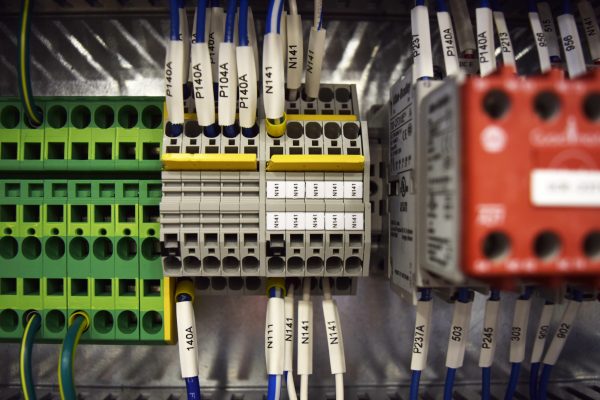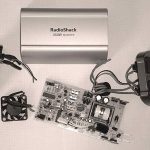The design of control systems is a specific example of engineering design. Again, the goal of control engineering design is to obtain the configuration, specifications, and identification of the key parameters of a proposed system to meet an actual need. The first step in the design process consists of establishing the system goals. For example, we may state that our goal is to control the velocity of a motor accurately. The second step is to identify the variables that we desire to control (for example, the velocity of the motor).The third step is to write the specifications in terms of the accuracy we must attain. This required accuracy of control will then lead to the identification of a sensor to measure the controlled variable.
As designers, we proceed to the first attempt to configure a system that will result in the desired control performance. This system configuration will normally consist of a sensor, the process under control, an actuator, and a controller, as shown in Figure 1.9. The next step consists of identifying a candidate for the actuator. This will, of course, depend on the process, but the actuation chosen must be capable of effectively adjusting the performance of the process. For example, if we wish to control the speed of a rotating flywheel, we will select a motor as the actuator. The sensor, in this case, will need to be capable of accurately measuring the speed. We then obtain a model for each of these elements.
The next step is the selection of a controller, which often consists of a summing amplifier that will compare the desired response and the actual response and then forward this error-measurement signal to an amplifier.
The final step in the design process is the adjustment of the parameters of the system in order to achieve the desired performance. If we can achieve the desired performance by adjusting the parameters, we will finalize the design and proceed to document the results. If not, we will need to establish an improved system configuration and perhaps select an enhanced actuator and sensor. Then we will repeat the design steps until we are able to meet the specifications, or until we decide the specifications are too demanding and should be relaxed. The control system design process is summarized in Figure 1.22.
The performance specifications will describe how the closed-loop system should perform and will include (1) good regulation against disturbances, (2) desirable responses to commands, (3) realistic actuator signals, (4) low sensitivities, and (5) robustness.
The design process has been dramatically affected by the advent of powerful and inexpensive computers and effective control design and analysis software. For example, the Boeing 777, which incorporates the most advanced flight avionics of any U.S. commercial aircraft, was almost entirely computer-designed [62, 63]. Verification of final designs in high-fidelity computer simulations is essential. In many applications, the certification of the control system in realistic simulations represents a significant cost in terms of money and time. The Boeing 777 test pilots flew about 2400 flights in high-fidelity simulations before the first aircraft was even built.
Another notable example of computer-aided design and analysis is the McDonnell Douglas Delta Clipper experimental vehicle DC-X, which was designed, built, and flown in 24 months. Computer-aided design tools and automated code-generation contributed to an estimated 80 percent cost savings and 30 percent time savings [64].

In summary, the controller design problem is as follows: Given a model of the system to be controlled (including its sensors and actuators) and a set of design goals, find a suitable controller, or determine that none exists. As with most of engineering design, the design of a feedback control system is an iterative and nonlinear process. A successful designer must consider the underlying physics of the plant under control, the control design strategy, the controller design architecture (that is, what type of controller will be employed), and effective controller tuning strategies. In addition, once the design is completed, the controller is often implemented in hardware, hence issues of interfacing with hardware can surface. When taken together, these different phases of control system design make the task of designing and implementing a control system quite challenging [82].



Comments are closed